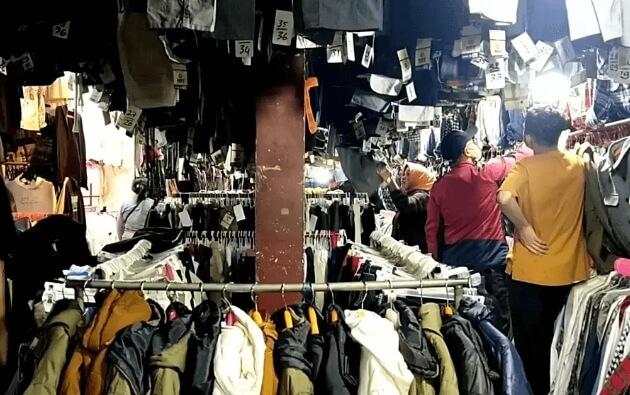For B2B buyers looking to expand their product lines, the Indonesia used clothes market presents an exciting opportunity. With a rich selection of items ranging from vintage wear to modern styles, understanding the sourcing landscape is vital. This article will provide key insights into how to effectively navigate this diverse market and maximize your investment.

Table of Contents
1. Introduction
The Indonesia used clothes market has become a focal point for B2B buyers looking to capitalize on the growing demand for sustainable fashion. With a rich variety of secondhand apparel available, Indonesia offers unique opportunities for businesses to enhance their product offerings while appealing to eco-conscious consumers. This article will explore key considerations for navigating this dynamic market effectively.

2. Understanding the Market Dynamics
Trends in the Secondhand Apparel Industry
The popularity of secondhand clothing is surging globally, and Indonesia is no exception. The rise of thrift culture, combined with the increasing awareness of environmental issues, has fueled a vibrant market for Indonesia used clothes. B2B buyers must stay informed about these trends to align their sourcing strategies with consumer demands, making it crucial to understand local market dynamics.
Consumer Preferences and Demand Drivers
Indonesian consumers are increasingly favoring affordable and unique clothing options, driving the demand for used apparel. Factors such as social media influence and the desire for individuality are encouraging buyers to explore Indonesia used clothes as a viable fashion choice. B2B buyers should consider these preferences when curating their collections to ensure they meet the evolving tastes of their target market.
3. Sourcing Strategies for B2B Buyers
Identifying Reliable Suppliers
Finding trustworthy suppliers is essential for any B2B buyer looking to invest in Indonesia used clothes. The local market features numerous vendors, but quality can vary significantly. Establishing strong relationships with reputable suppliers can lead to better product sourcing, ensuring that businesses receive high-quality garments that resonate with their customers.
Evaluating Quality and Authenticity
When sourcing Indonesia used clothes, evaluating the quality and authenticity of items is paramount. Many Indonesian suppliers offer vintage and unique pieces that can enhance a retailer’s collection, but buyers must implement stringent quality checks. This diligence not only ensures customer satisfaction but also builds trust in the brand among consumers seeking quality secondhand fashion.

4. Logistics and Import Regulations
Navigating Shipping and Customs
The logistics of importing Indonesia used clothes can be complex, requiring a solid understanding of shipping processes and customs regulations. B2B buyers should partner with experienced freight forwarders who specialize in Indonesian imports to streamline operations. Efficient logistics management is crucial to minimize delays and ensure timely delivery of products to meet market demand.
Understanding Local Laws and Compliance
Compliance with local laws is vital for successful business operations in Indonesia. B2B buyers must familiarize themselves with regulations surrounding the importation of used clothing to avoid potential legal issues. Understanding these laws helps businesses navigate the complexities of the Indonesia used clothes market, ensuring that all imports are handled legally and ethically.
5. Pricing and Negotiation Tactics
Setting a Competitive Pricing Strategy
Developing a competitive pricing strategy is critical for B2B buyers in the Indonesia used clothes market. By analyzing local pricing trends and understanding the cost structures of suppliers, buyers can establish prices that attract customers while maintaining profitability. This strategic approach can differentiate their offerings in a competitive landscape.
Effective Negotiation Techniques with Suppliers
Negotiating favorable terms with suppliers can significantly impact the success of B2B buyers in sourcing Indonesia used clothes. Building rapport and understanding the supplier’s perspective can lead to more productive negotiations. Buyers should leverage their market knowledge to propose mutually beneficial terms, ensuring a sustainable partnership with their suppliers.
6. Challenges and Risks in the Market
Common Pitfalls for B2B Buyers
Entering the Indonesia used clothes market presents several challenges that B2B buyers must navigate carefully. Misunderstanding local market dynamics, failing to vet suppliers adequately, or underestimating logistics complexities can lead to costly mistakes. Recognizing these pitfalls in advance can help buyers prepare better and mitigate potential risks.
Strategies to Mitigate Risks
Implementing robust risk management strategies is essential for B2B buyers involved in Indonesia used clothes. Regular supplier evaluations, diversifying sourcing channels, and maintaining clear communication can all help minimize risks. By proactively addressing potential challenges, buyers can ensure a smoother operational process and enhance their overall success in the market.

7. Conclusion
Key Takeaways for Successfully Entering the Indonesia Used Clothes Market
Successfully navigating the Indonesia used clothes market requires a combination of market understanding, strategic sourcing, and effective risk management. B2B buyers who are informed about local trends, establish reliable supplier relationships, and adhere to legal regulations will be better positioned to thrive in this growing sector. By leveraging these insights, businesses can make informed decisions and capitalize on the opportunities that Indonesia used clothes offer.
